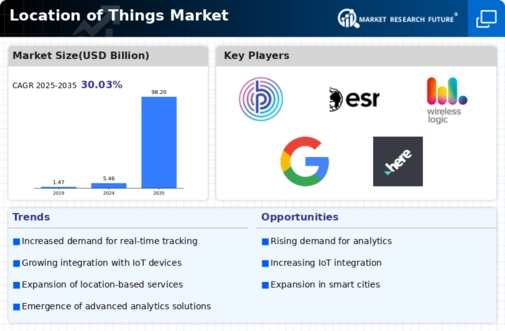Location Of Things Size
Location of Things Market Growth Projections and Opportunities
Different market forces contribute to the Location of Things (LoT) Market. Primarily, LoT is influenced by aspects of physical geography and spatial information. One of the key determinants is infrastructure development in a given area. Furthermore, the regulatory environment plays a vital role in shaping the LoT market in a particular location. Prescriptive guidelines on data protection and privacy, as well as those related to geospatial data, determine the formation and operation of location-based technologies. In regions with transparent and strong governance structures, organizations often find it easy to negotiate legal complexities that enhance innovation and drive interest in Location of Things solutions. The economic landscape also significantly influences the LoT market for a particular location. Regions with vibrant economies and strong purchasing power are more likely to experience increased adoption rates for location-based services. Consumer behavior and preferences are other market factors that shape the Location of Things marketplace. In places where there is high demand for less, companies will invest more into loT technology to avoid disappointing their clients due to failure in the delivery of loT technology services. According to Kitchin (2014), a geographical landscape is an important factor when considering locations suitable for various applications based on LBS technology, including smart cities, etc. Urban areas have dense populations and complex environments that present unique challenges or opportunities for LoT solutions, including addressing issues associated with signal interference and congestion and precise location tracking within built-up areas. Similarly, technological uptake at any place determines how fast the IoT market grows (location). Districts embracing emerging technologies with virtual populations tend to adopt LoTs faster than others do not. For example, numerous projects targeting smart cities' initiatives are underway, promoting forward momentum through reliance on such undertakings on LoT technologies aimed at improving urban living conditions while enhancing efficiency (Kitchin 2014). The nature itself may also lead to specific directions of application and further development of existing ones for LoT applications. For example, particular industries like farming and integrative factors rely upon location-based data to improve their operations. There is a particularly high demand for LoT applications linked to precision farming and asset tracking in rural areas, with agriculture as the dominant economic activity.










Leave a Comment